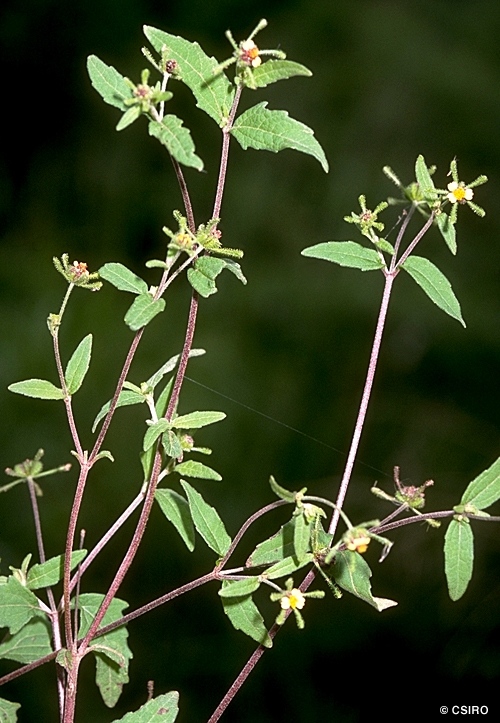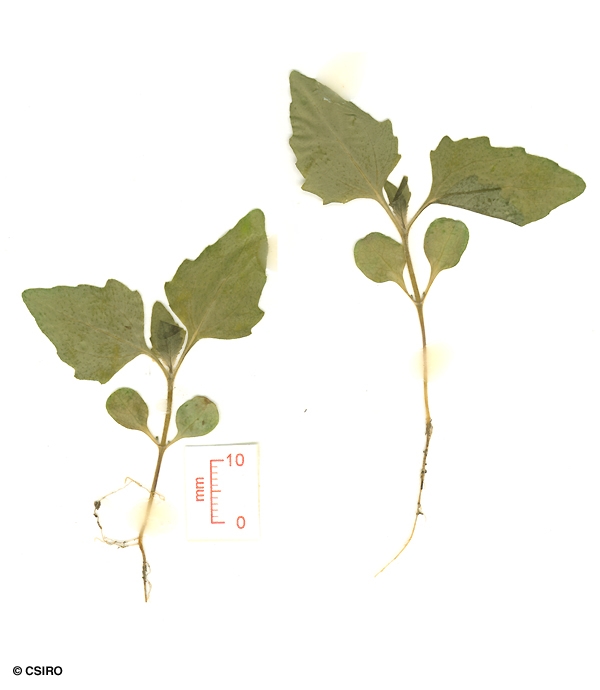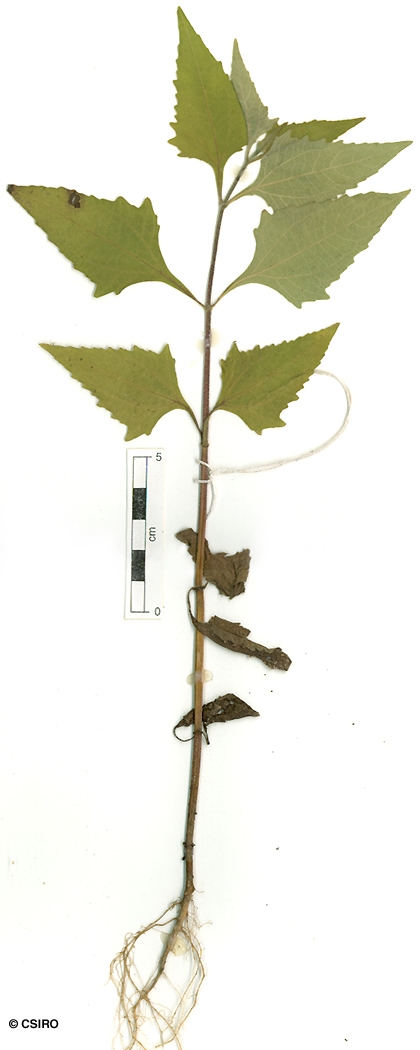Australian Tropical Rainforest Plants - Online edition
Sigesbeckia orientalis L.





Linnaeus, C. von (1753) Species Plantarum 2: 900. Type: Habitat in China, Media ad pagos.
Indian Weed; Farmer's Lice
Usually flowers and fruits as a shrub about 1 m tall but also flowers when smaller.
Flowers sessile in heads, about 15 flowers per head. Each head of flowers usually contains some female flowers, each consisting of a +/- 3-lobed perianth, and some hermaphrodite flowers with a 5-lobed perianth tube enclosing five anthers fused into a tube. Each head subtended by an involucre of about five green spathulate bracts which are clothed in sticky glands. Outer bracts about 5-10 x 0.5 mm. Corolla orange or yellow in the upper half but green in the lower half. Ovary glabrous.
Disk achenes 4-angular, about 2-5 mm long. Ray achenes clasped by persistent glandular hairy bracts.
Hypocotyl clothed in short erect hairs just visible with a lens. Stem above the cotyledons clothed in much longer erect white hairs. Cotyledons +/- orbicular, about 6-7 x 5-6 mm. First pair of leaves with toothed margins. At the tenth leaf stage: stem, terminal bud and both the upper and lower leaf blade surfaces clothed in white somewhat scabrous hairs. Leaf blade margins irregularly toothed and/or lobed. Seed germination time 10 to 32 days.
Probably an introduced species from Asia and Africa. Occurs in CYP, NEQ, CEQ and southwards as far as Victoria. Also found in Western Australia and South Australia. Altitudinal range in NEQ from near sea level to 1100 m. Grows in clearings and along roads in monsoon forest, vine thickets and rain forest.
This species may have some minor medicinal uses. (http://www.mylifechoices.com/dictionary.shtml)
The plant is a common weed in China and has been used there in herbal medicine both externally for ulcers and boils and internally for malaria and rheumatism and as an analgesic. Cribb (1981).





